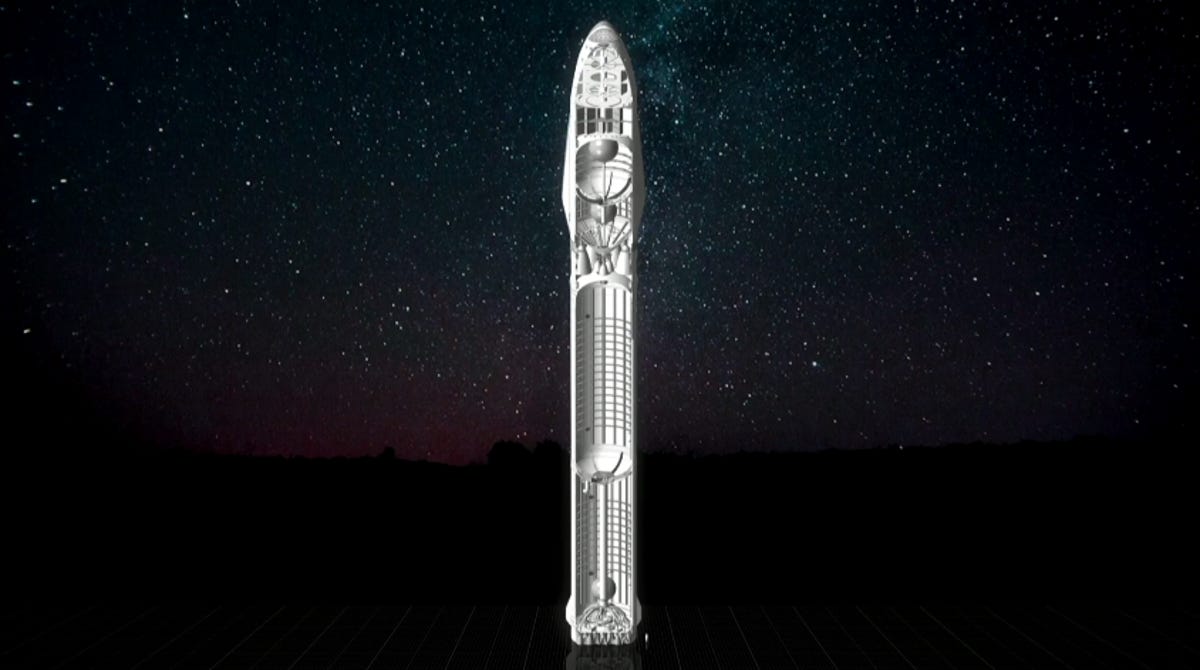A look at Elon Musk's plan to move us to Mars (pictures)
The SpaceX founder has an audacious plan to build the first Martian metropolis, and he just might have the rockets to pull it off.

Musk's Mars rocket
In a much-anticipated talk at a space conference in Mexico on Tuesday, SpaceX founder Elon Musk revealed his grand ambition to build a city on Mars of as many as a million people and as soon as the 2060s. The plan centers on a huge new SpaceX rocket (shown here in a slide from Musk's presentation) even more powerful than the huge Saturn V rockets used for the Apollo missions of the 1960s and '70s.
New grand-daddy of all rockets
This comparison shows how the SpaceX Mars rocket, powered by nearly 50 Raptor engines, will dwarf most other rockets.
Rocket man
Musk on stage at the International Astronautical Conference in Guadalajara, Mexico. The SpaceX CEO laid out an audacious plan over the course of a few hours detailing a timeline that begins with initial flights to Mars within a decade working toward a goal of a self-sustaining Martian metropolis.
So far... lots of rockets
A timeline of SpaceX rocket launches so far. Musk has built an impressive commercial rocket enterprise in 15 years, but it's nothing compared with what he hopes to accomplish in the next 40 years.
SpaceX vs. Saturn V
A comparison of the SpaceX Mars vehicle and Saturn V rocket used for NASA's moon missions.
Your ride to Mars
This slide from Musk's Mars show details the SpaceX space ship that would transport passengers between Mars and Earth and perhaps even deeper into the solar system. It is designed to eventually carry 100 passengers, although at one point Musk mentioned he hoped to have ships with twice that capacity.
Meet the Raptor
A look at the engine that will power SpaceX Mars missions. Each rocket will carry 47 of these to create over three times more thrust than a Saturn V rocket.
Raptors in formation
This slide shows how the dozens of engines in each Mars rocket would be configured.
One hefty rocket
A break down of the specs on the Mars rocket booster that will do most of the heavy lifting for Mars missions to get payloads out of Earth's gravity well. Afterward, it separates and returns to Earth to be re-used, just like what SpaceX has started to demonstrate with its Falcon 9 rockets.
Inside a future space ship
The view from inside the development tank for SpaceX's Mars ship.
Musk and "future Mars"
Throughout the presentation, the depiction of Mars behind Musk would change, sometimes appearing as the dry, desolate Mars we know, and other times appearing transformed into a more Earth-like world with clouds and patches of green.
Mars is not enough
As if building a metropolis on Mars weren't ambitious enough, Musk ended by noting that SpaceX's space ships could be ideal for exploring the rest of the solar system of refueling stations were setup on places like Saturn's moon Enceladus.
Cosmic filling stops
Europa, which has been in the news this week as a place worth exploring for potential life, is another place Musk envisions as good for setting up a cosmic gas station.
Mars economics
To make his Martian metropolis feasible, Musk said it would be first necesarry to bring down the cost of moving to the red planet to under $200,000 in today's dollars.
Martian fiesta?
Back in 2002, the early SpaceX team shows it has what it takes to make humans an interplanetary species... or something. For all the details, be sure to check out our live coverage of the event.

